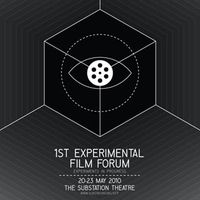Film Or Video For The Filmmaker? Its Not The Oven But The Baker And The Dough
Celluloid film has always been regarded as a credible recording medium and art form. Intrinsically organic and chemical, imagery on film is created from a chemical reaction of colour emulsion and silver halide crystals. Film is still very much traditionally and globally preferred as a medium of communication and entertainment. Its centennial history is well established in all aspects of production, post-production, distribution and presentation. These foundations are not easily shaken.
Much content is still originated on film because of its intrinsic almost human qualities of subtlety, warmth, versatility and dynamism. Perhaps this is what pro-film filmmakers talk about: film's ‘intrinsic' capability to capture the emotional content and sublte nuances of the content, therefore enhancing the performance of the actors. But then again, it is precisely due to its inherent qualities, the manufacture, use and processing of film is a science of the combined efforts chemical engineering and physics, which contributes to its cost.
An emerging threat to the classical ways of moviemaking is digital technology such as digital video and now High Definition. Admittedly, many filmmakers have rushed to embrace this new form of making films, claiming lower cost, ease of use and accessibility as the main pull factors. Digital video production has truly made filmmaking more democratic. It has encouraged more stories to be told regardless of cost, logistics and to a certain degree special skill. This exclusivity of cinematic story telling, that filmmaking once monopolised, has waned.
Generally, looking at it from a content generation point of view, this is highly encouraging. Much demanded content has proliferated due to a widespread use of digital production and digital cinema. Digital video production is an entry position for newer filmmakers to hone their craft of storytelling at a low cost.
Honestly, the high cost of film is always taken as the scapegoat to look for another alternative medium. But pro-film producers argue that budgeting is a matter of discipline, focus and scale. Filmmaking on celluloid, is about knowing the medium and knowing how to use it well. So are we to say that digital filmmakers want a faster track to making movies without considering the process not craft?
It is basically image technology versus electronic technology when it comes down to a comparison between film and video. But to compare and contrast film and video is endless. The visual storytelling process, be it film or video, still adheres to the principles of individual filmmakers are their skill sets. The culpability of the content is ‘returned' to the filmmaker. No bad workman should blame his tools, or the lack of it.
Looking at it from a data perspective, film stores more image information than its rivals. It is also interesting to note that even this assessment is also based on the current technology that is able to accommodate and sift out film information. The highest resolution film scanners are able to extract over 12 million pixel information from just one frame of 35 mm film, which is ironically limited by the capability of the scanning device. Compared to High Definition video, 35 mm film captures 6 times the full resolution of HD. Even using 16 mm film, when a frame of Super 16 mm film is scanned across its horizontal axis, 2,000 pixels of information are recorded. The best HD cameras only record 1,920 pixels across its imaging CCD frame. Of course, naturally, one would then query if the tear eyed women watching a love story; or the enthused boy enjoying a robbery shoot-out, would really bother to evaluate and assess this benchmark?
Ambivalent industry practitioners believe that both film and digital technologies can and have been co-existing in moviemaking. Digital technologies have proven to be very useful in motion picture post production. Digital video, be it in data or magnetic tape, is used as a conduit for the post production process leading up to the final film output. Digital video in this form acts as an intermediary, created from laser scanning the film negative into a bit stream of digital data. This digital intermediate is then used as a canvas for digital editing tools to reference colour timing, visual and temporal effects. Ultimately, the final output is taken back to the film realm and processed. This centennial way of distributing films will then feel its competition when digital cinema gets more and more widespread.
Whichever the choice format, ultimately the decision is a pragmatic one that producers and directors have to bear. Technology, is a good servant but a bad master, and filmmakers should never back down nor rationalize their own creativity and storytelling. Making films and telling compelling stories are creative. But creativity is not an excuse to use a medium, but a reason to harness it well to speak of humanity and culture.
Similar content
By Kerrine Goh
30 Sep 2009
posted on
04 Jun 2011
posted on
03 May 2011
from - to
20 May 2010 - 05 Sep 2010
deadline
30 Apr 2014
posted on
29 May 2011


